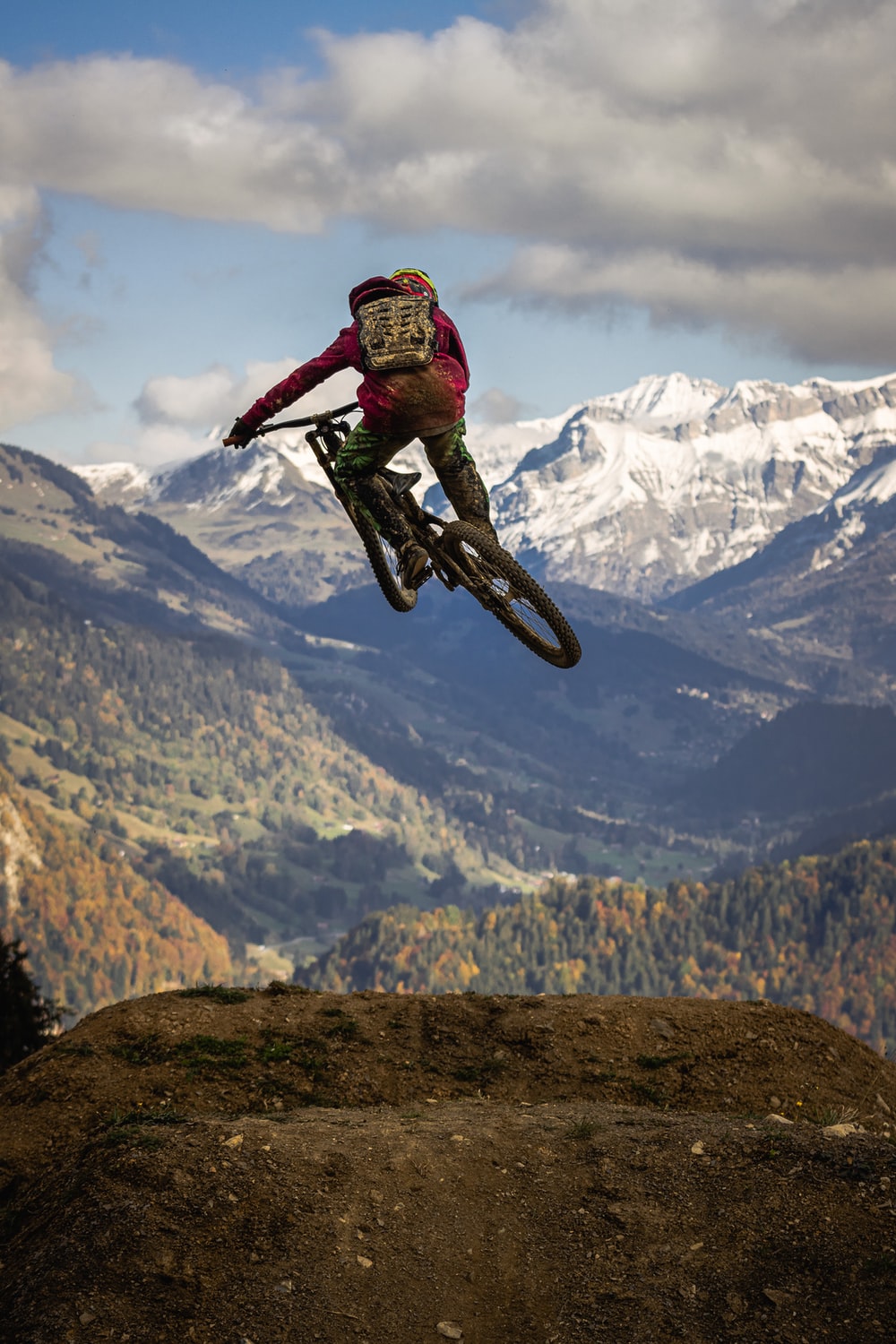Mountain biking is a fun and exciting sport. However, it can also lead to low back pain if you are not careful. The bumpy terrain and jumps can put a lot of stress on your lower back. Luckily, there are things you can do to help prevent and reduce back pain while mountain biking. This will help you stay comfortable and enjoy your ride.
Use Proper Bike Fit and Adjustments
One of the most important things you can do is make sure your bike fits you properly. When your bike does not fit right, it can force you into positions that strain your back. Here are some tips for getting the right mountain bike fit:
- Get a professional bike fitting. This will ensure your seat height, handlebar position, and other settings are optimized for your body. A good bike shop can help with this.
- Adjust your seat height so your legs are almost fully extended at the bottom of a pedal stroke. Your knees should have a slight bend.
- Make sure your handlebars are close enough so you do not have to reach too far. But they should not be so close that they crowd you.
- Consider getting a dropper seat post. This allows you to lower your seat for descents. A lower seat lets you move around more freely on the bike.
Adjusting your bike to properly fit your body type and riding style is key for preventing back pain. Take the time to dial in the perfect position for you.
Work on Your Riding Position and Technique
How you position yourself on the bike also affects back strain. Practice good riding posture and methods to avoid back discomfort. Here are some tips:
- Keep your back straight in a neutral position. Do not round your shoulders or arch your back too much.
- Use your legs as shock absorbers. Keep your knees and elbows bent to absorb bumps. Avoid locking out your arms and legs.
- Stay relaxed on the bike. Tension in your muscles strains your back.
- Lean back and lower your chest on descents. This shifts your weight back and off your hands.
- Pedal smoothly in circles. Mash or jerk your pedals and it jars your spine.
- Stand up periodically to give your back a rest. This changes your position.
Thinking about your riding posture and actively using proper technique protects your back. Ride actively and freely to avoid muscle tension.
Choose Shock Absorbing Components
The parts you choose for your mountain bike also impact back strain. Quality shock-absorbing components help cushion your body from bumps and vibration. Here are some to consider:
- Front suspension fork. The front suspension helps smooth out bumps and provide control. Aim for 100mm or more of suspension travel.
- Wide tires. Wider mountain bike tires can run at lower pressures for more shock absorption. Tires around 2.3-2.5 inches are ideal.
- Dropper seat post. As mentioned earlier, a dropper post lets you lower your seat for descents. This gives your legs more room to absorb impacts.
- Shock absorbing seat post. These special seat posts flex to absorb bumps before they reach your spine. They provide extra comfort.
- Thick padded saddle. A quality mountain bike saddle with extra cushioning helps reduce road vibration from reaching your back.
Upgrading to shock-absorbing components like these reduces some of the strain mountain biking places on your back. They cushion your body from bump forces.
Strengthen Your Core and Back Muscles
Building stronger core and back muscles also protects your back while riding. Strong muscles help support and stabilize your spine to reduce strain and risk of injury. Try doing exercises like these regularly:
- Planks tone abdominal muscles. Hold a plank position on your forearms and toes. Keep your back straight. Start with shorter times and work up.
- Bridges target your lower back muscles. Lie on your back with knees bent. Raise your hips up, clenching your glutes and core.
- Supermans work your entire back. Lie face down and simultaneously raise your arms and legs. Reach forward with arms.
- Yoga poses like the cobra and child’s pose also improve core strength. Try taking yoga classes.
Focus on building core and back endurance. That way your muscles can maintain good riding posture and absorb shock. Stronger muscles support your back health.
Improve Your Overall Fitness Levels
Being in better overall physical shape makes your whole body more resilient to strains from mountain biking. Work on improving your fitness with activities like:
- Aerobic exercise gets your heart pumping. This increases blood flow and stamina. Try jogging, swimming, or cycling.
- Weight training makes your muscles stronger. Lift weights 2-3 times a week but don’t overdo it. Compound exercises like squats are great.
- Flexibility training through yoga or stretching improves mobility and reduces muscle tightness. Stretch regularly.
- Make sure you are getting enough sleep for muscle recovery. Sleep deprivation weakens the body.
Developing your overall endurance, strength and flexibility goes a long way for back health. The fitter you are, the better your back can handle mountain biking’s demands.
Take Regular Breaks to Rest Your Back
It is also important to give your back adequate breaks when riding. This allows your muscles, joints and tendons time to recover. Be sure to:
- Take short 1-2 minute walking breaks during long rides. Dismount and walk around to relieve back tension.
- Stop and stretch your back if you feel muscle tightness or discomfort. Stretch your lower back gently.
- Take days off from biking. Recover fully at least 1-2 days a week with easier activities like walking.
- Go on less jarring rides at times. Mix in flatter cross country trails to give your back gentle riding.
- Try other cross-training activities like swimming and yoga on some days to vary back stress.
Giving your body sufficient rest is vital for avoiding overuse injuries. Your back needs time to rejuvenate after bumpy rides.
Consider Back Protection Gear
You can also help shield your back from pain by using protective mountain biking gear. Some items to think about include:
- Back protectors absorb impact and add padding for your spine and ribs. Upper body armor is helpful.
- Kidney belts stabilize your lower back against twists and strains. They wrap around your waist.
- Hydration packs with waist and chest straps take weight off your back. They also hold water for sipping.
- A neck brace reduces injuries from crashing, especially if doing jumps. It limits head motion.
Safety gear like this alleviates some stress on your back. Protecting your vulnerable spine and supporting muscles is smart.
Proper bike fit, riding technique, fitness, rest breaks and back protection all help keep your back feeling great on the trail. Pay attention to back pain warning signs. Reduce speed and difficulty if your back hurts during or after rides. Implementing these tips will allow you to enjoy the thrill of mountain biking without sacrificing your back health. Keep your spine safe so you can keep riding trails for years to come!




